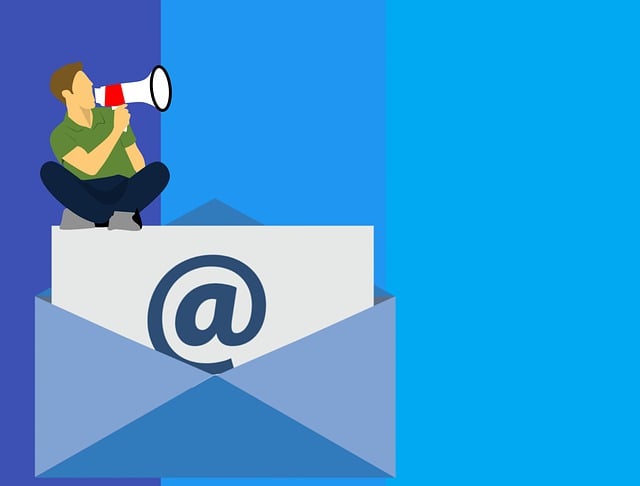Are you ready to unlock the true potential of your email marketing campaigns? In today’s digital age, it is crucial to harness the power of automation to maximize your marketing efforts. By utilizing automated campaigns, you can streamline your processes, save time, and ultimately drive better results.
But how do you measure the success of these campaigns? Enter email marketing metrics. These powerful indicators provide invaluable insights into your campaign performance, allowing you to make data-driven decisions that will propel your business forward.
From tracking open rates and click-through rates to analyzing deliverability and inbox placement, the key to unlocking the true power of automated campaigns lies in understanding and leveraging these metrics.
In this article, we will delve into the world of email marketing metrics, uncovering their importance and showing you how to harness their power for maximum impact. Get ready to take your email marketing to new heights!
Key Takeaways
- Email marketing metrics provide insights into campaign performance.
- Continuous optimization of campaigns leads to better performance.
- Monitoring sender reputation and implementing email authentication protocols is crucial.
- Personalized emails generate higher transaction rates.
Understanding the Benefits of Automated Campaigns
You’ll be amazed at the time and energy you’ll save by using automated campaigns to streamline your email marketing efforts. The benefits of automation are numerous and powerful.
Firstly, automation allows you to send personalized and relevant content to your customers, improving customer engagement and satisfaction. By segmenting your audience and automating your campaigns, you can target specific groups with tailored messages that resonate with their interests and preferences. This not only increases open and click-through rates but also drives higher conversions and revenue.
Additionally, automated campaigns enable you to nurture leads and build relationships with your customers at scale. You can set up drip campaigns that deliver a series of emails over time, keeping your brand top of mind and guiding prospects through the customer journey.
By harnessing the power of automation, you can optimize your email marketing strategy and achieve remarkable results.
Now, let’s dive into the essential email marketing metrics to track.
Essential Email Marketing Metrics to Track
When it comes to tracking the success of your email marketing campaigns, there are three key metrics that you need to pay attention to:
-
Open rate and click-through rate: These metrics give you insights into how engaging your emails are and how well they are driving traffic to your website.
-
Conversion rate and revenue generated: These metrics provide a clear picture of how effective your emails are at converting leads into paying customers.
-
Unsubscribe rate and spam complaint rate: Monitoring these metrics allows you to gauge the satisfaction of your subscribers and make necessary improvements to your campaigns.
By analyzing and optimizing these metrics, you can ensure that your email marketing efforts are delivering the desired results.
Open Rate and Click-Through Rate
To truly gauge the effectiveness of your email marketing campaign, keep an eye on the open rate and click-through rate, as they provide valuable insights into how engaged your audience is.
Here’s why these metrics matter:
-
Open rate analysis: This metric tells you how many recipients opened your email, giving you an idea of how well your subject line and sender name resonate with your audience.
-
Click-through rate optimization: The click-through rate shows you how many people clicked on the links in your email, indicating their interest and engagement. It helps you identify which email content and calls-to-action are most effective.
-
Understanding audience engagement: By monitoring these metrics, you can assess the level of engagement your emails receive, allowing you to refine your strategies and improve future campaigns.
-
Improving campaign performance: Analyzing open rate and click-through rate data enables you to make data-driven decisions and optimize your email marketing efforts for better results.
By tracking these metrics, you can gain valuable insights to enhance your email marketing campaign. Moving forward, let’s explore how conversion rate and revenue generated can further measure your campaign’s success.
Conversion Rate and Revenue Generated
Measuring the success of your email campaign goes beyond open rate and click-through rate; it also involves tracking conversion rate and the revenue generated.
Conversion rate analysis allows you to determine the percentage of recipients who took the desired action after opening your email, whether it’s making a purchase, signing up for a webinar, or downloading an e-book. By analyzing this metric, you can identify areas for improvement and optimize your campaigns to drive more conversions.
In addition to conversion rate, revenue tracking is crucial to understanding the financial impact of your email marketing efforts. By tracking the revenue generated from your email campaigns, you can calculate the return on investment (ROI) and determine which campaigns are driving the most revenue.
Now, let’s delve into another important aspect of email marketing performance: the unsubscribe rate and spam complaint rate.
Unsubscribe Rate and Spam Complaint Rate
Discovering the impact of unsubscribe and spam complaint rates is crucial for maintaining a successful email campaign that keeps your audience engaged and interested.
High unsubscribe rates indicate that your subscribers are not finding value in your emails or are no longer interested in your content. To reduce unsubscribe rates, make sure your emails are targeted and personalized, providing relevant and valuable information to your subscribers.
Additionally, monitor your spam complaint rate, as this indicates that your emails are being marked as spam by recipients. High spam complaint rates can harm your email deliverability and prevent your messages from reaching your subscribers’ inboxes. To improve deliverability, avoid using spam trigger words, regularly clean your email list, and make it easy for subscribers to unsubscribe.
By focusing on these metrics, you can optimize your email campaigns and ensure that your messages are reaching the right audience. This sets the foundation for setting goals and benchmarking your campaigns effectively.
Setting Goals and Benchmarking Your Campaigns
Imagine yourself in the exciting world of email marketing, where you can set ambitious goals and benchmark your campaigns to see the power of automation unfold before your eyes. Setting campaign objectives is crucial for success. Whether it’s increasing open rates, boosting click-through rates, or driving conversions, clearly defined goals provide direction and focus.
Assessing campaign performance allows you to track your progress and make data-driven decisions. By analyzing key metrics like open rates, click-through rates, and conversion rates, you can identify areas for improvement and optimize your campaigns for better results.
To make the process more enjoyable and relatable, here are five tips to set goals and benchmark your campaigns effectively:
- Define specific and measurable objectives.
- Set realistic and achievable targets based on past performance.
- Regularly monitor and track your campaign metrics.
- Compare your results against industry benchmarks.
- Continuously optimize your campaigns for better performance.
Now, let’s dive into analyzing email deliverability and inbox placement to ensure your messages reach their intended recipients seamlessly.
Analyzing Email Deliverability and Inbox Placement
To ensure the success of your email marketing campaigns, it’s crucial to monitor your sender reputation and implement email authentication protocols. By doing so, you can build trust with email service providers and improve your email deliverability.
Additionally, optimizing your email design and content for deliverability can help you avoid spam filters and increase the chances of your emails reaching the inbox.
Lastly, addressing spam triggers and taking steps to improve inbox placement will further enhance the effectiveness of your email campaigns.
Monitoring Sender Reputation and Email Authentication
Keep an eye on your sender reputation and ensure proper email authentication to maintain a solid foundation for your email marketing campaigns.
Your sender reputation is crucial in determining whether your emails reach the inbox or get marked as spam. By monitoring your sender reputation, you can identify any issues or negative feedback that could harm your deliverability.
Additionally, implementing email authentication protocols like SPF, DKIM, and DMARC helps establish trust with ISPs and ensures that your emails are not forged or altered. A strong sender reputation and email authentication build trust with ISPs and recipients, ultimately improving your email deliverability.
By optimizing your email design and content for deliverability, you can further enhance your email marketing success.
Optimizing Email Design and Content for Deliverability
Enhance the impact of your email campaigns by optimizing your design and content for better deliverability, ensuring that your messages stand out in the crowded inbox and capture the attention of your recipients.
To achieve this, follow email design best practices such as using a clean and responsive layout, incorporating visually appealing images, and including a clear call-to-action.
Additionally, pay attention to the role of subject lines in deliverability. Craft compelling subject lines that are concise, personalized, and relevant to increase open rates and avoid being marked as spam.
By optimizing your email design and content, you can improve the deliverability and engagement of your campaigns, leading to higher conversion rates and customer satisfaction.
Transitioning into the next section, let’s now address spam triggers and explore ways to improve inbox placement.
Addressing Spam Triggers and Improving Inbox Placement
Improve your chances of getting your emails into the inbox and avoiding the dreaded spam folder by addressing common triggers that can cause your messages to be marked as spam. By understanding and avoiding these triggers, you can significantly improve email engagement and reduce bounce rates.
Start by ensuring that your email content is relevant and personalized to each recipient. Avoid using excessive capitalization or exclamation marks in your subject lines and email body, as these can often trigger spam filters. Additionally, be cautious of using spammy words or phrases, such as ‘free’ or ‘limited time offer.’
Regularly monitor your email deliverability and use email authentication protocols like SPF and DKIM to establish trust with internet service providers. By proactively addressing potential spam triggers, you can increase your inbox placement and improve overall email performance.
Now, let’s explore the next section about utilizing A/B testing and segmentation.
Utilizing A/B Testing and Segmentation
Discover the untapped potential of A/B testing and segmentation to unlock the full power of your email marketing campaigns. A/B testing strategies allow you to experiment with different elements of your emails, such as subject lines, call-to-action buttons, and content layout, to identify what resonates best with your audience.
By analyzing the data from these tests, you can make data-driven decisions to optimize your campaigns for higher open rates, click-through rates, and conversions.
Additionally, segmentation techniques enable you to divide your email list into smaller, targeted groups based on demographics, preferences, or past interactions. This allows you to create personalized and highly relevant content that speaks directly to your subscribers’ needs and interests.
By leveraging the power of A/B testing and segmentation, you can take your email marketing to the next level and drive better results.
Now, let’s explore how you can further enhance your campaigns by leveraging automation and personalization.
Leveraging Automation and Personalization
In this discussion, you’ll learn how to leverage automation and personalization in your email marketing campaigns. We’ll explore the benefits of setting up triggered and drip campaigns. This allows you to send targeted messages based on specific actions or behaviors.
Additionally, we’ll discuss the power of dynamic content and personalized recommendations. This will help you deliver tailored experiences to your subscribers.
Finally, we’ll explore how to measure the impact of your automated campaigns on ROI. This ensures you can optimize your strategies for maximum effectiveness.
Setting Up Triggered and Drip Campaigns
When it comes to setting up triggered and drip campaigns, imagine your email marketing strategy as a well-oiled machine, with each automated email serving as a cog in the system that keeps your audience engaged and nurtured throughout their customer journey.
Triggered campaigns allow you to respond to specific actions or events, such as abandoned carts or completed purchases, ensuring timely and relevant communication.
Drip campaigns, on the other hand, enable you to deliver a series of pre-scheduled emails over a period, gradually building a relationship and guiding your audience towards conversion.
By setting up triggered campaigns, you can capture your audience’s attention at the right moment, increasing the chances of conversion.
Maximizing drip campaigns allows you to stay top-of-mind with your audience, ensuring consistent engagement and nurturing.
With the combination of triggered and drip campaigns, you can create a seamless and personalized experience for your audience, guiding them towards making informed decisions.
Transitioning into the subsequent section about dynamic content and personalized recommendations, you can further enhance the effectiveness of your automated campaigns.
Dynamic Content and Personalized Recommendations
Through the use of dynamic content and personalized recommendations, you can tailor your automated emails to each individual recipient, creating a visually engaging and highly relevant experience.
A dynamic content strategy allows you to dynamically change the content of your emails based on various factors such as demographics, past purchases, or browsing behavior. By leveraging personalized recommendation algorithms, you can deliver product recommendations specifically tailored to each recipient’s preferences and interests.
This level of customization not only improves the overall user experience but also increases the likelihood of conversions and sales. In fact, studies have shown that personalized emails generate six times higher transaction rates compared to non-personalized ones.
By incorporating dynamic content and personalized recommendations into your automated campaigns, you can significantly boost engagement and drive higher ROI.
In the next section, we will explore how to measure the impact of these automated campaigns on ROI without losing valuable insights.
Measuring the Impact of Automated Campaigns on ROI
Maximize the measurement of your automated campaigns’ impact on ROI with insightful metrics.
To truly understand the effectiveness of your campaigns, it’s crucial to measure their impact on your return on investment (ROI). By analyzing the data and calculating the ROI, you can gain valuable insights into the success of your campaigns and make informed decisions to optimize your marketing strategies.
The Emotional Impact:
- Boost: Uncover the hidden potential of your campaigns and watch your ROI soar.
- Confidence: Feel confident in your marketing decisions as you see the tangible results.
The Data-Driven Impact:
- Precision: Measure campaign effectiveness with accurate and detailed metrics.
- Insights: Gain valuable insights into your audience and their engagement with your campaigns.
By measuring the impact of your automated campaigns on ROI, you can make data-driven decisions that will lead to increased success and growth for your business.
Frequently Asked Questions
How can I ensure that my automated email campaigns are reaching the right audience?
To ensure your automated email campaigns reach the right audience, focus on the relevance of email list segmentation. By segmenting your list based on customer characteristics, preferences, or behavior, you can tailor your messages for maximum impact.
Additionally, prioritize email deliverability monitoring to ensure your emails are reaching recipients’ inboxes. By regularly monitoring deliverability rates, you can identify and address any issues that may be hindering your campaigns from reaching your intended audience.
What are some best practices for optimizing email deliverability and inbox placement?
To optimize email deliverability and inbox placement, follow these best practices.
First, focus on building a clean and engaged email list. Regularly remove inactive subscribers and use double opt-ins to ensure quality contacts.
Next, personalize your emails and avoid spammy content or excessive use of promotional language.
Monitor your sending reputation and email engagement metrics to identify and address any deliverability issues.
Finally, use email authentication methods like SPF, DKIM, and DMARC to improve inbox placement and prevent spoofing.
How can I effectively use A/B testing to improve the performance of my email campaigns?
To effectively use A/B testing and improve your email campaign performance, start by creating A/B testing strategies. Test different elements such as subject lines, email content, and call-to-action buttons. Analyze email engagement metrics like open rates, click-through rates, and conversions to determine which variation performs better. Use this data-driven approach to identify the most effective elements and continuously optimize your campaigns for better results.
What are some strategies for segmenting my email list to deliver more personalized content?
To deliver more personalized content, there are several effective segmentation strategies you can use.
Start by analyzing your email list based on demographics, such as age, location, or gender.
Then, segment your subscribers based on their behavior, such as previous purchases or website interactions.
By tailoring your content to these specific segments, you can increase engagement and conversion rates.
Personalization strategies like these have been proven to drive results and build stronger relationships with your audience.
Are there any specific automation tools or platforms that you recommend for implementing automated email campaigns?
When it comes to implementing automated email campaigns, there are several email marketing tools available that can make your life easier.
One popular option is Mailchimp, which offers a user-friendly interface and a wide range of automation features.
Another great choice is HubSpot, known for its robust automation capabilities and seamless integration with other marketing tools.
Lastly, ActiveCampaign is a powerful platform that provides advanced automation options and detailed analytics.
Ultimately, the best choice depends on your specific needs and budget.
Conclusion
In conclusion, automated email campaigns are a powerful tool for marketers to drive engagement and increase conversions. By tracking essential metrics such as open rates, click-through rates, and conversion rates, you can optimize your campaigns for maximum effectiveness.
Setting goals and benchmarking your campaigns allows you to measure success and make data-driven decisions. For example, Company X saw a 30% increase in click-through rates after implementing personalized automated emails based on customer segmentation.
By leveraging automation and personalization, you can unlock the full potential of email marketing and drive impressive results.









